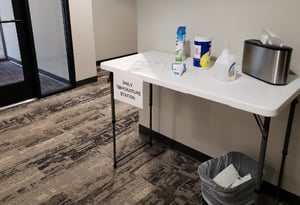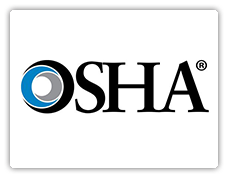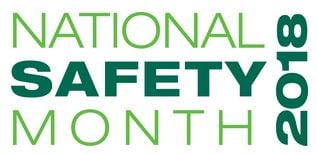Guidance for your business practices while navigating COVID-19
With all the information available, what actions should be taken to keep our employees well? How can our company assure we implement an effective written plan to keep our employees safe without being overwhelming?
Follow these steps to implement an effective written infectious disease plan:
- Exposure
- Understand the risk based on business type/job/position to determine complexity of your plan
- Conduct a hazard assessment, thinking about employees interaction with others that require
- Working within 6 feet physical distance and/or
- Share equipment, common space, vendor, customer etc.
- Prevention
- Outline available measures to control the spread of germs until a vaccination is released using a hierarchy of injury prevention
- Substitution – work at home practices, temporary suspend some job functions, etc.
- Engineering – add physical barriers, increase air exchange, utilize high efficiency filters, etc.
- Administrative – sick at home policy, daily symptom monitoring, cleaning/disinfecting, stagger shifts/lunches, etc.
- Personal Protective Equipment – utilize face covers, exam masks, filtering face piece respirators i.e. N95, gloves, eye protection, face shields, etc. depending on the risk
- Outline available measures to control the spread of germs until a vaccination is released using a hierarchy of injury prevention
- Preparedness
- Determine resources needed and estimated time frame, various actions can be implement at different times to still remain effective i.e. revision to sick policy can be implemented before monitoring body temperature due to supply chain demands
- Develop a plan for positive employee test, i.e. trace contact, employee notice, deep disinfect, etc.
- Response
- Outline company plan and review with leadership
- Conduct supervisor education of COVID-19 and company plan
- Communicate with employee company plan and leave room for modifications as needed, promote 2-way communication
Resources
- OSHA Guidance on Preparing Workplaces for COVID-19
- OSHA COVID-19
- CDC Interim Guidance for Businesses COVID-19
- Contact R&R Insurance Services
- Looking for a risk assessment for your business operations
- Need assistance implementing best practice controls that match your risk
- Additional questions about your business situation and COVID-19


 OSHA started a new initiative this year: if the OSHA 300A data an employer submits to the Injury Tracking Application (ITA) shows the rates are above their industry averages, then that employer will receive an email. The email is informational only and obligates an employer to do nothing. As with every employer, regardless of their rates, OSHA encourages frequent review of safety and health efforts.
OSHA started a new initiative this year: if the OSHA 300A data an employer submits to the Injury Tracking Application (ITA) shows the rates are above their industry averages, then that employer will receive an email. The email is informational only and obligates an employer to do nothing. As with every employer, regardless of their rates, OSHA encourages frequent review of safety and health efforts. According to the
According to the 





